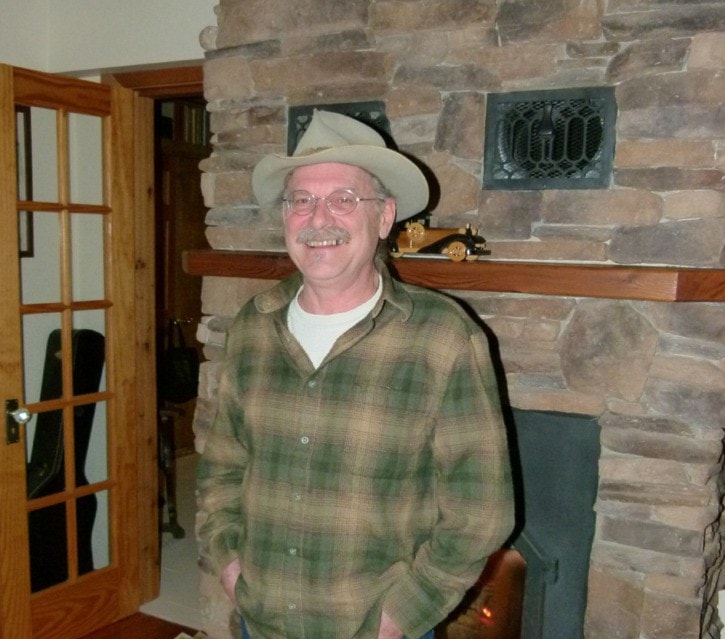After retiring as an Ecosystem Biologist and Planner for the Ministry of Environment in July, Ken Dunsworth’s 33 year career can be summed up with one word: passion. Ever since he was a little boy of seven years old, he would draw pictures of wildlife and think of how he could protect them.
Ken and his wife, Inge, moved to Bella Coola in April of 1980. Previous to that, they had been volunteering in the South Pacific for the Universal House of Justice, and Ken had also volunteered for the United Nations in The Year of the Child. He had written friends in B.C. regarding potential job opportunities, and the Nygaards responded so positively that Ken and Inge came to live in the Bella Coola Valley.
Ken started his career in the 1980s with the Ministry of Forests, which was then called the Mid Coast Timber Supply Area. He was a Field Operations Supervisor for ten years, which entailed timber harvesting and implementing a small business enterprise program. At the time, the forest industry was in control of forests, before the current Forest Practises Code was established and the government changed.
Ken left the Ministry of Forests for the Ministry of Environment in 1992. His focus was wildlife and fish inventory, and ecosystem mapping and planning.
“The rarity of our species is changing,” he explains. “This is dependent upon habitat response to changing ecosystems, and that’s why we’re ecosystem biologists: to look at the environment with a holistic perspective versus a unilateral view.”
His focus was ecosystem protection and wildlife habitat for focal species, and his list of accomplishments is admirable. He spent twenty years defining habitat and getting protection for Class 1 and 2 habitats for bears. He identified winter ranges for mountain goats, deer, and moose. He also identified sensitive watersheds within EVM objectives, including fisheries-sensitive watersheds.
While mapping all of the lakes in our region, Ken noted that the high quality of our low-elevation lakes (below 600 feet) is measured by the fact that they contain fish.
Ken has researched an abundance of interesting local species. The Marble Murrelet is an ocean bird that flies 80 kilometres inland to nest on tree branches covered in moss. The branches must be 10 centimetres or more in diameter to lay its one egg, making it dependent on old growth.
Queen Charlotte Goshawks are red listed, but they still nest in the Bella Coola Valley. Visually similar to the abundant Northern Goshawk, they can only be identified through DNA testing. His co-worker, Volker, and biology research crews discovered its nesting density to Rivers Inlet in the U valley river systems. They are now writing up protection measures for industry.
Then there is the fascinating Tailed Frog, the oldest amphibian in North America. They spend three years as a tadpole, residing in small cascading streams that are greater than 20% in slope to keep them safely outside of fish habitat. They can be found in the upper reaches of Clayton, Saloompt and Thorsen creek. The only other frog like it is in New Zealand.
Ken enjoyed working with First Nations, particularly the Nuxalk and Oweekeno. He affectionately recounted a story from the 60s when a government dike inspector discovered a forgotten site where potlatch masks were buried near Oweekeno Lake. Potlatch activities and associated materials were illegal until 1951, when the ban was repealed.
The inspector told the Chief, and in consultation with the elders, he guided them to the location. The Oweekeno uncovered the masks and performed a ceremony near a talus slope. The inspector was allowed to take photographs, but could not touch the potlatch materials. After the ceremony, the masks were buried once again. As time passed, knowledge of the location was lost and it is likely a slide has covered that area.
This inspector worked for 45 years and recently passed the photos onto Ken, who delivered them to Oweekeno. These photos may provide clues to the location of these buried traditional materials.
Ken also enjoyed many conversations with Clayton Mack and he is familiar with The ‘Hanging Valley of the Glaciers,’ which Mack refers to in his books.
In 2006, Ken was awarded the B.C. Ecosystem Officer of the Year; a moment to be proud of as it has only been awarded five times. With more time on his hands since his retirement, Ken has several aspirations.
He plans to rebuild the log house on his property into two apartments to rent by next year. Travel abroad is in the future as he has six grandchildren in New Zealand. Plus, with friends in Denmark and Germany, a train trip throughout Europe is on the list, as is an adventure to the Amazon. Closer to home, Ken will continue to serve on the Hagensborg Water District Board and the Bear Working Group.
Reflecting on his career, Ken beamed, “Just to have a chance to work in the field and being successful in combining Land Use Planning and inventory, allowing for economic opportunities, was fabulous. I got to live my dream.”
